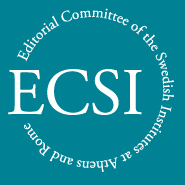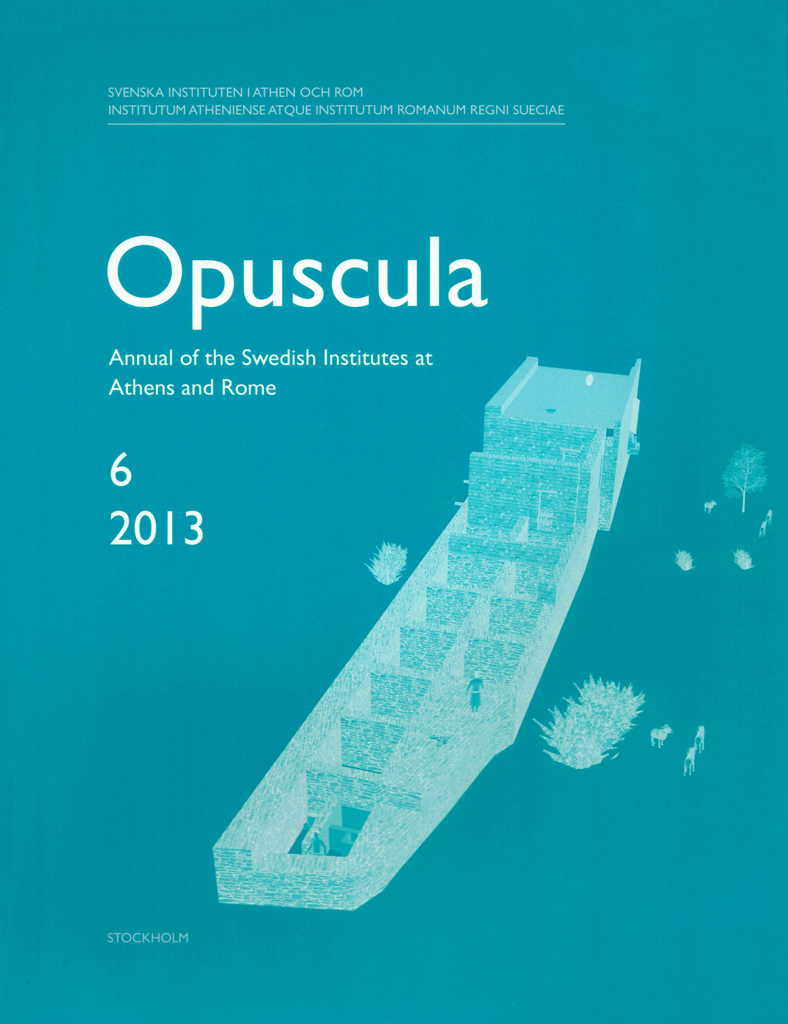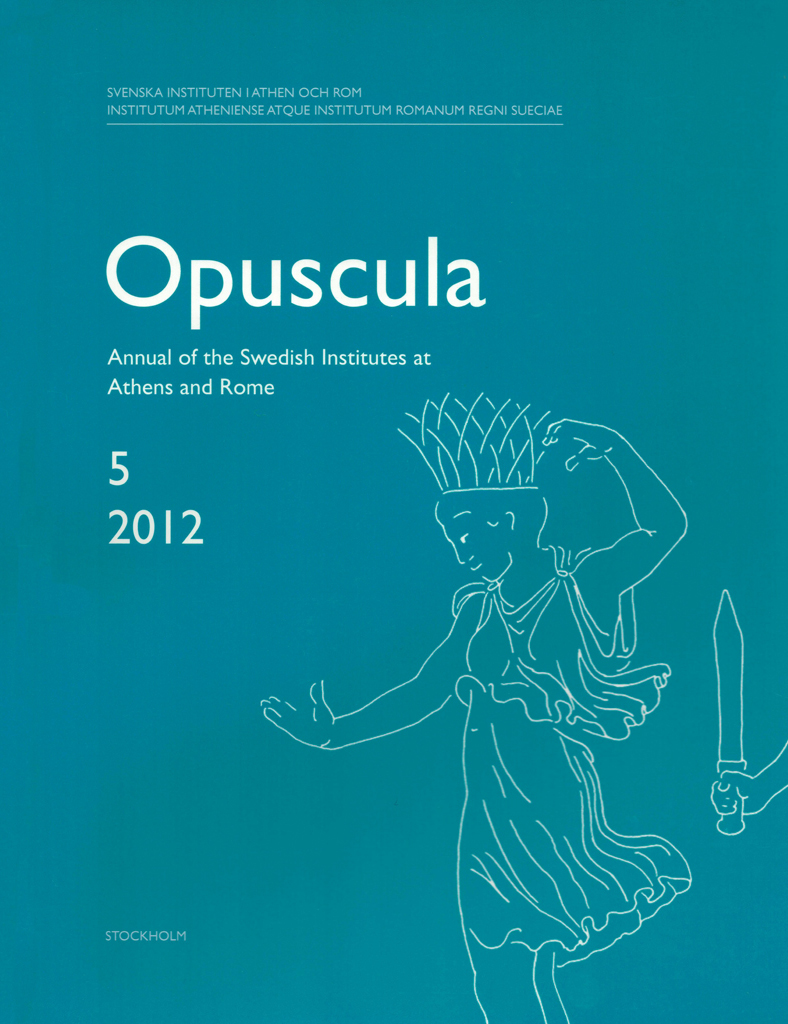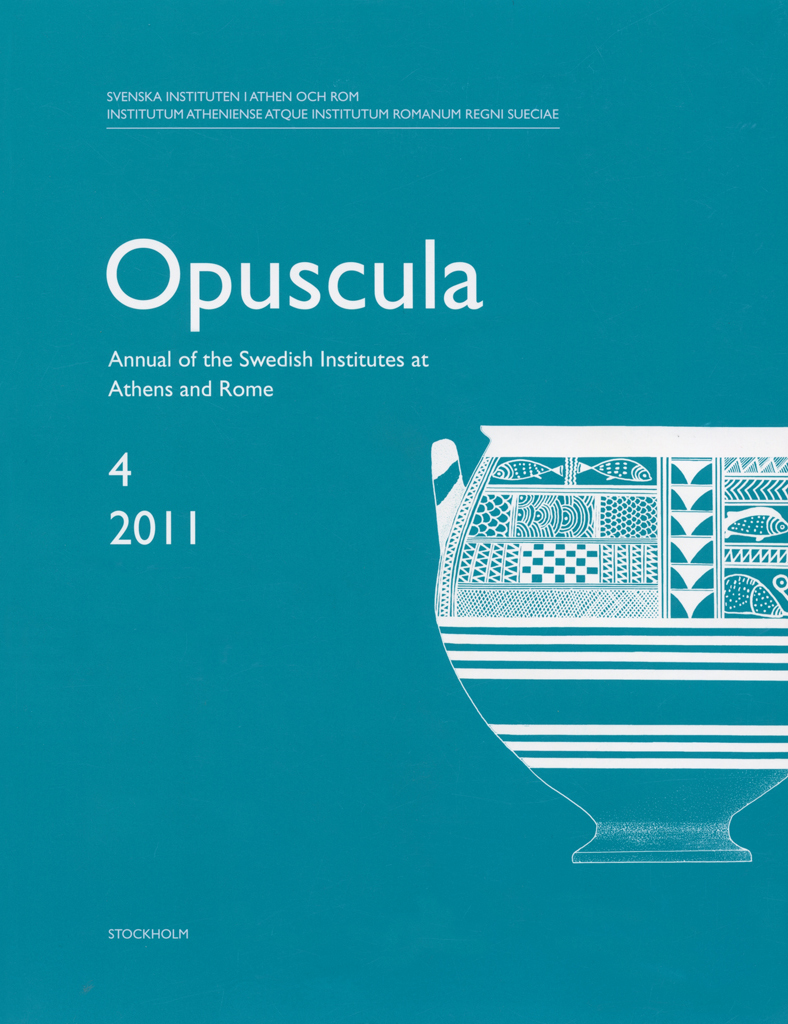Opuscula is published by the Swedish Institutes at Athens and Rome, with the aid of a grant from the Swedish Research Council. Distributed by Eddy.se AB. View journal at ERIH PLUS. All content available with open access. The agency of Greek and Roman statues. From Homer to Constantine By Jan N. Bremmer Abstract In the Archaic period the Greeks did not yet conceptualize the difference between a divinity and its statue. Therefore, stories that stressed the agency of statues separate from their divinities must have seemed less strange at that time than when the statues had become independent, so to speak, from their gods or goddesses. The latter started to happen in the transitional period to the Classical era when the well-known triad of divinities—heroes—mortals came into being, and philosophers began to criticize the worship of statues. All these changes together led to a development in which the agency of statues increasingly became noteworthy. After the 5th century BC we keep hearing about the agency of statues but we can also notice a growing critique of the worship of statues by different philosophical schools. In both Greece and Rome divine statues manifested themselves in particular during moments of crisis or…
Opuscula is published by the Swedish Institutes at Athens and Rome, with the aid of a grant from the Swedish Research Council. Distributed by Eddy.se AB. View journal at ERIH PLUS. All content available with open access. The Swedish Jordan Expedition 2009 and 2010 at Tall Abu al-Kharaz. Preliminary results from the Early Iron Age occupation in Area 9. With appendices by T. Bürge, and A. Gustafsson & J. Azzopardi By Peter M. Fischer Abstract Tall Abu al-Kharaz, in the central Jordan Valley, was occupied during approximately five millennia. A walled town, which had a dominant position in the Jordan Valley, existed already in the Early Bronze Age IB, viz. before 3050 BC. Walled settlements also flourished at the end of the Middle Bronze Age (around 1600 BC), during the Late Bronze Age (roughly 1500–1200 BC) and throughout the entire Iron Age (roughly 1200–600 BC). It is most likely that Tell Abu al-Kharaz is identical with Jabesh Gilead: this city is mentioned frequently in the Old Testament. During earlier seasons most of the Early Iron Age remains were found to have been disturbed by later settlers. It is, therefore, essential for the documentation of the settlement history of this city,…
Opuscula is published by the Swedish Institutes at Athens and Rome, with the aid of a grant from the Swedish Research Council. Distributed by Eddy.se AB. View journal at ERIH PLUS. All content available with open access. The impact of restoration. The example of the dancing satyr in the Uffizi By Julia Habetzeder Abstract The aim of this article is to show that reputed restorations may have an unexpected impact on the study of ancient sculpture. During the 17th–19th centuries, a number of restored antiques were held in exceptionally high regard. One of the consequences of their renown was the production of copies and adaptations in different scales and media. Such reproductions did not distinguish between the ancient and the restored parts of the work. Today these reproductions are centuries old, and in many cases their provenance has long since been forgotten. Therefore, such post-Antique sculptures are easily misinterpreted as ancient. Subsequently, they are at times used as evidence of ancient sculptural production. Needless to say, this may cause flawed notions of Classical sculpture. The complexity of this relationship, between the ancient and the restored, is here exemplified by tracing the impact that a restored motif—“Satyrs with cymbals”—has had on…
Opuscula is published by the Swedish Institutes at Athens and Rome, with the aid of a grant from the Swedish Research Council. Distributed by Eddy.se AB. View journal at ERIH PLUS. All content available with open access. The water-mills on the Lamas River in Cilicia By Paavo Roos Abstract A water-mill establishment on the Lamas River in Cilicia was reported by travellers in the 19th century. It consisted of a series of parallel, horizontal-wheeled mills along an oblique rock face. It was the subject of examination in 1990 and a brief publication shortly afterwards. Due to its interesting and rather rare construction a more thorough publication is given here. Bibliographical information Paavo Roos, ‘The water-mills on the Lamas River in Cilicia’, Opuscula. Annual of the Swedish Institutes at Athens and Rome (OpAthRom) 5, 123–131. Stockholm 2012. ISSN: 2000-0898 ISBN: 978-91-977798-4-5. Softcover, 204 pages. https://doi.org/10.30549/opathrom-05-06
Opuscula is published by the Swedish Institutes at Athens and Rome, with the aid of a grant from the Swedish Research Council. Distributed by Eddy.se AB. View journal at ERIH PLUS. All content available with open access. Euergetism and city-walls in the Italian city of Telesia By Richard Ramanius Abstract Six inscriptions relating to the construction of the fortifications of the southern Italian town of Telesia were analyzed and compared to three inscriptions of the same type from the Italian town of Grumentum. The purpose of this was to gain insight into how Italian towns funded and organized the construction of city-walls during the Late Republic. The city-walls were built progressively in both towns, and in both cases were probably funded by private citizens, even if they were acting as magistrates. In Grumentum an older city-wall was gradually replaced by letting each new, annually elected magistrate build a new section. It would seem that in Telesia the walls were built first. The subsequent construction of the towers probably followed the plan of the local senate and was paid for by the magistrates themselves. The expressions pro ludeis/ludis on some inscriptions suggest that they were built instead of giving games. Bibliographical…
Opuscula is published by the Swedish Institutes at Athens and Rome, with the aid of a grant from the Swedish Research Council. Distributed by Eddy.se AB. View journal at ERIH PLUS. All content available with open access. The New Swedish Cyprus Expedition 2011. Excavations at Hala Sultan Tekke. Preliminary results. With appendices by T. Bürge, L. Franz and R. Feldbacher By Peter M. Fischer Abstract The main objective of the excavations of the Late Cypriote city of Hala Sultan Tekke is the investigation and determination of the complete occupational sequence of the pre-12th century levels. The groundpenetrating radar survey (GPR) led to the discovery and excavation of numerous rooms of a large Late Cypriote complex. During the second year of excavations at the site the expedition exposed a third phase of occupation (Stratum 3). A Stratum 2 compound, with extraordinarily wide walls was uncovered in the eastern part of the excavations. Intact vessels include Base-ring I and II, and White Painted VI, and Late Helladic imports. Other wares include: White Painted Pendant/Cross Line Style, Red-on-Black/Red, Bichrome Wheel-made, White Slip I and II, Monochrome, Base-ring I and II, Red Lustrous Wheel-made, White Painted/Plain-White Wheel-made, and White Shaved. Unique discoveries amongst the…
Opuscula is published by the Swedish Institutes at Athens and Rome, with the aid of a grant from the Swedish Research Council. Distributed by Eddy.se AB. View journal at ERIH PLUS. All content available with open access. Labraunda 2011. A preliminary report on the Swedish excavations with an appendix by Ragnar Hedlund By Lars Karlsson, Jesper Blid & Olivier Henry Abstract The main goals of the 2011 campaign were the excavation of the Kepez tower, the West Church and the necropoleis. The tower of Kepez was excavated and black-gloss pottery indicates a date in the 3rd century BC. The 2011 excavations in the West Church uncovered three Late Roman and Byzantine building phases. Among the finds from Late Antiquity was a well-preserved glass lamp with a Greek inscription and a marble figurine, possibly representing an apostle or a saint. The excavations in the necropolis uncovered eleven tombs in the Area 5B, located along the Sacred Way, completing the excavation initiated in 2010. New tombs were discovered in the territory east and south of the sanctuary. Finally, the three stone sarcophagi inside the Built Tomb were moved in order to facilitate complete excavation and the cleaning of all the interior space…
Opuscula is published by the Swedish Institutes at Athens and Rome, with the aid of a grant from the Swedish Research Council. Distributed by Eddy.se AB. View journal at ERIH PLUS. All content available with open access. Dancing with decorum. The eclectic usage of kalathiskos dancers and pyrrhic dancers in Roman visual culture By Julia Habetzeder Abstract This article examines two groups of motifs in Roman visual culture: females modelled on kalathiskos dancers, and males modelled on pyrrhic dancers. Eclecticism is emphasized as a strategy which was used to introduce novelties that were appropriate within a Roman cultural context. The figures representing kalathiskos dancers and pyrrhic dancers were both changed in an eclectic manner and this resulted in motifs representing the goddess Victoria, and the curetes respectively. Kalathiskos dancers and eclectic Victoriae occur on many different media at least from the Augustan era and into the 2nd century AD. It is argued here that the establishment of these two motifs in Roman visual culture is closely related to the aesthetics which came to the fore during the reign of Augustus. Thereafter, both kalathiskos dancers and eclectic Victoriae lingered on in the Roman cultural context until many of the material categories…
Opuscula is published by the Swedish Institutes at Athens and Rome, with the aid of a grant from the Swedish Research Council. Distributed by Eddy.se AB. View journal at ERIH PLUS. All content available with open access. Italian dreams, Roman longings. Vilhelm Lundström and the first Swedish philological-archaeological course in Rome, 1909 By Anna Blennow & Frederick Whitling Abstract In Sweden, the future of Classical Philology and the study of the ancient past remain uncertain a century after the first Swedish university course in Rome, led by Vilhelm Lundström, Professor of Latin at Gothenburg, and the simultaneous establishment of the study of Classical Archaeology and Ancient History in Swedish academia in 1909. The institutionalisation of the Swedish scholarly presence in Rome materialised with the establishment of the Swedish Institute in Rome (SIR) in 1925, and its inauguration the following year—partly as a result of Lundström’s pioneering initiative. The present article discusses the implications of Lundström’s course in Rome as well as in Sweden, and sheds light on his neohumanist vision of an integrated study of antiquity; with Classical Archaeology and Ancient History as integral elements of Classical Philology. This vision lay abandoned throughout the twentieth century, but deserves to be…
Opuscula is published by the Swedish Institutes at Athens and Rome, with the aid of a grant from the Swedish Research Council. Distributed by Eddy.se AB. View journal at ERIH PLUS. All content available with open access. Is it possible to believe in a syncretistic god? A discussion on conceptual and contextual aspects of Hellenistic syncretism By Petra Pakkanen Abstract This article will look into the phenomenon of syncretism from two different points of view. Firstly, syncretism will be discussed from a conceptual perspective in relation to elaborations on belief, an equally perplexing concept in the studies of ancient Greek religion. Secondly, a very selective example of the syncretism between the goddess Demeter and Isis as an object of veneration in Ptolemaic Egypt will be looked at more closely in order to bring the conceptual perspective into closer contact with the contextual one. It will be argued that syncretism can be regarded both as an essence of polytheistic religious systems in particular, and as a process of syncretization. Once a metaphorical understanding of syncretism is added to these views, believing in a syncretistic deity (Demeter-Isis in our case) appears doubtful since a new entity in a polytheistic belief-system would have…



